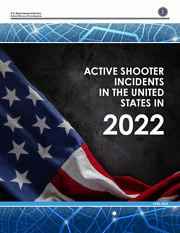By the U.S. Federal Bureau of Investigation, Lauren Richards, Peter Molinaro, John Wayne. et al.
Operationally defining the lone offender terrorist is challenging, as the nature of terrorism is both highly political and contextually dependent. Over the years, there has been disagreement over the classification of violent acts under the label of “terrorism.” While an argument can be made that the infliction of fear upon a targeted group or the public is sufficient to classify an act as terrorism, the FBI definition of terrorism requires a purported motivation that goes beyond exclusively personal motivations and attempts to influence change in furtherance of extremist ideologies of a social, political, religious, racial or environmental nature. The focus of the current study examined offenders who carried out their attacks independent of any direction from a terrorist group or organization.Lone offender terrorism continues to pose a threat as violent ideological groups and terrorist organizations place emphasis on inspiring lone offender-style attacks. Additionally, individuals who view violence as an accessible and justified method for advancing their own ideological goals can independently mobilize toward violent action. While attacks directly coordinated by terrorist organizations are generally more lethal globally, the United States departs from this trend: lone offender attacks in the United States are more deadly, possibly due to strong U.S. counterterrorism capacity for disrupting.The current report provides an overview of the data, exploring the various topics encompassed within the coding protocol, including bystander observations, offenders’ backgrounds, family and social networks, behavioral characteristics, radicalization, and attack planning. Predicting lone offender terrorism incidents is not possible, but prior research and operational experience support the conclusion that acts of targeted violence, including lone offender terrorist attacks, may be preventable through early recognition and reporting of concerning behavior. The report aims to inform broader goals of enhancing bystander education and awareness, as well to aid the prevention efforts of law enforcement and multi-disciplinary threat assessment teams working to counter targeted violence threats every day. To work toward this objective, the authors examine relevant contextual factors and analyze the statements and behaviors offenders exhibited before carrying out their attacks.
Washington, DC: U.S. FBI, 2019. 80p.










